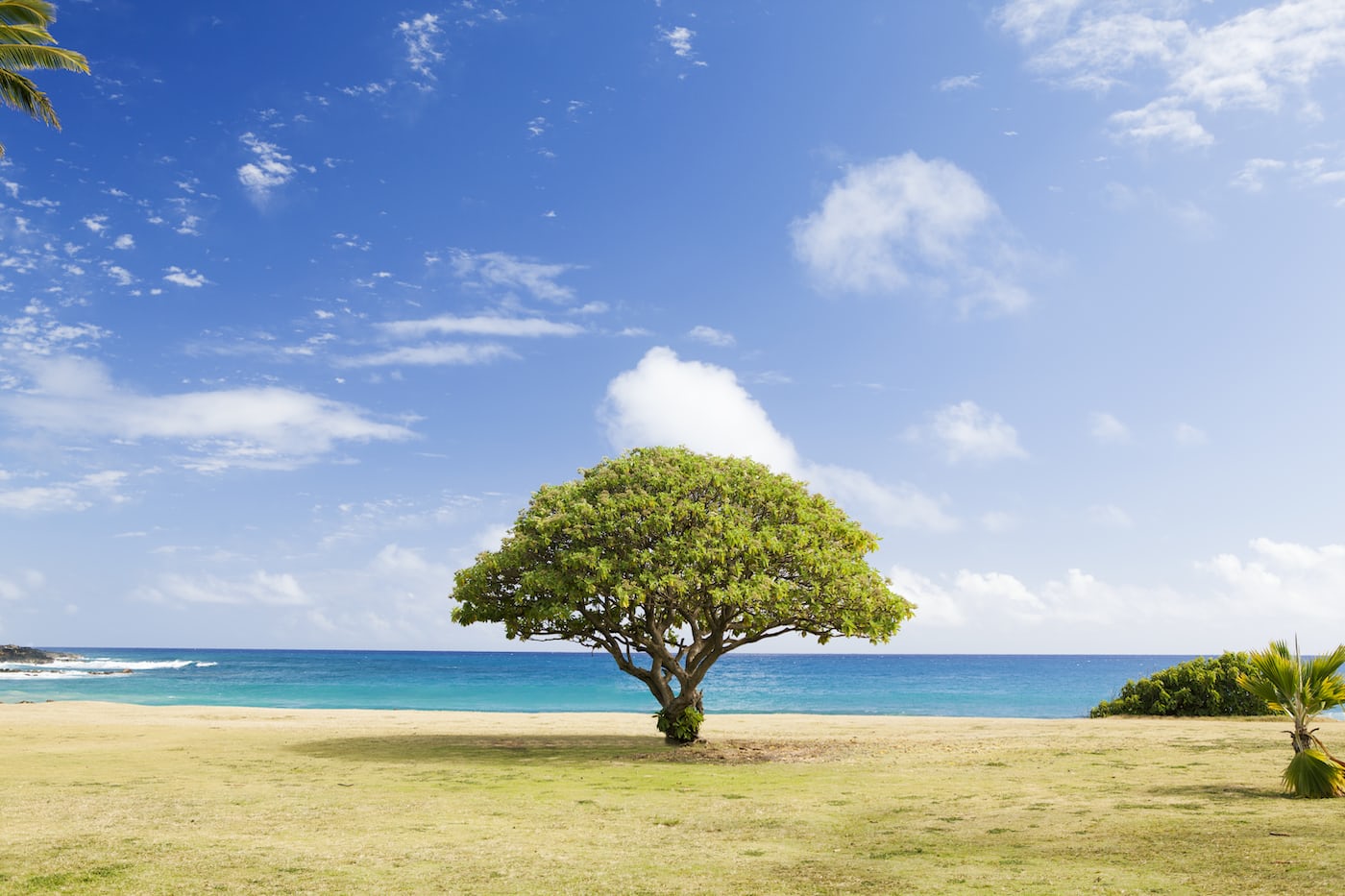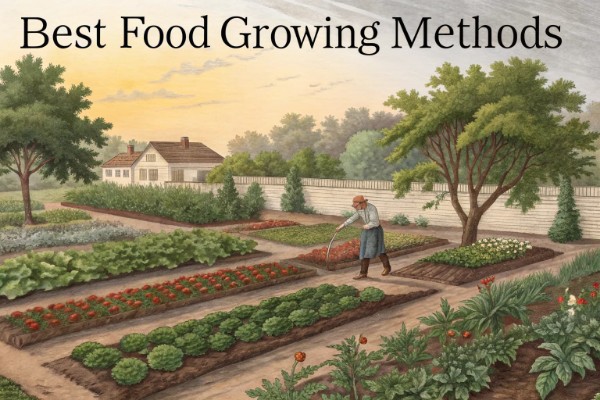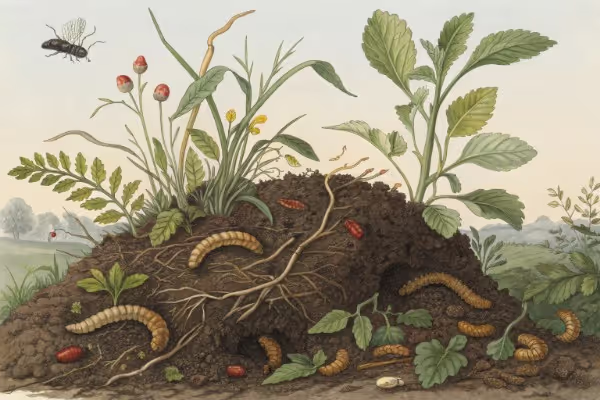Dwarf Trees: A Refined Guide for Compact Garden Elegance

Dwarf Trees
Dwarf trees grant serious gardening style in limited space. Ideal for patios, balconies, or tight corners, dwarf trees offer dramatic visual interest without overtaking your garden. Use dwarf trees to frame entrances, anchor container plantings, or provide delicious fruit harvests—with serious flavor packed in tiny packages. Here's how to choose, plant, and maintain dwarf trees that'll reward you season after season.
Cheatsheet: Cultivating Miniature Tree Sophistication
🌳 Popular Varieties
- Fruit: Meyer Lemon, Dwarf Apple, Stella Cherry
- Flowering: Japanese Maple, Dwarf Magnolia, Camellia
- Evergreen: Hinoki Cypress, Dwarf Spruce, Boxwood
- Fact: Dwarf fruit trees mature at 6-10 ft (1.8-3 m); standard trees reach 20 ft (6 m)+
🌱 Site & Soil
- Select full sun (≥6 hrs/day); some tolerate partial shade
- Loamy, well-drained soil; pH 6.0–7.0
- Space: At least 4-8 ft (1.2-2.4 m) between trees
🛠️ Tools and Products You'll Need
- Quality pruning shears
- Watering can or drip irrigation
- Slow-release fertilizer
- Mulch (bark or straw)
- Sturdy stake and soft ties
- Large container (if potting): 15–25 gal (57–95 L)
🧑🌾 Steps to Success
- Soak root ball 1 hour before planting.
- Dig hole twice as wide as root ball, same depth.
- Mix compost into loose soil.
- Place tree, spread roots, refill hole, firm gently.
- Water deeply; apply 2 in (5 cm) mulch, keep mulch from trunk.
- Stake if needed; tie gently to avoid trunk damage.
- Fertilize in early spring; repeat every 6-8 weeks during growing season.
- Prune for shape after flowering or harvest; remove dead or crossing branches.
- Monitor for pests: aphids, scale, spider mites; treat with neem oil or insecticidal soap.
⏰ Watering & Care
- Water weekly; increase during dry spells or heatwaves (>85°F/29°C)
- Reduce watering in winter
- Container trees may need water every 2-3 days
🍎 Health & Self-Sufficiency
- Grow up to 50 lbs (23 kg) fruit/tree/year
- Fresh, pesticide-free harvest at arm’s length
- Boost biodiversity, attract pollinators
✨ Pro Tips
- Rotate potted trees for even growth
- Choose dwarf rootstocks for size control
- Annual repotting refreshes soil nutrients
Dwarf Trees: A Refined Guide for Compact Garden Elegance
I grow Dwarf Trees to frame small spaces the way a chef plates a dish, with restraint, contrast, and a bit of swagger. A balcony becomes a courtyard, a courtyard reads like a pocket arboretum.
The trick is understanding the levers of size control and vigor, then playing them like a seasoned pruner. I’ll walk through what actually works, what’s hype, and where to spend money for lasting structure.
What makes a tree “dwarf” anyway
Two core routes exist: genetic dwarfism and size control via grafting. Genetic dwarfs have short internodes and compact habits; grafted dwarfs rely on a dwarfing rootstock throttling vigor.
Training can miniaturize silhouette too. Espaliers, cordons, columns, and stepovers edit architecture by suppressing apical dominance, redirecting energy into fruiting spurs, and shortening internodes.
How small is small
For apples: M27 tops out around 6 to 8 ft (1.8 to 2.4 m), M9 at 8 to 10 ft (2.4 to 3 m), and M26 at 10 to 14 ft (3 to 4.3 m). True patio citrus on dwarfing trifoliate types sit 4 to 8 ft (1.2 to 2.4 m) with pruning.
With dwarf conifers, growth rate matters more than height claims. Miniatures add under 2.5 cm per year; dwarfs add 2.5 to 15 cm per year, which keeps them tidy for decades.
“Dwarf” conifers are defined by annual extension: miniature < 1 in, dwarf 1 to 6 in, intermediate 6 to 12 in. Source: American Conifer Society, Growth Rate Classifications.
Rootstocks you can trust
Apples: M27 for ultra-compact pots, M9 for patio-sized trees with dependable yields, M26 where wind or shallow soils demand a bit more root. Pears: Quince C is smaller than Quince A.
Cherries: Gisela 5 for tight quarters, Gisela 6 if you want a touch more vigor. Plums: Pixy stays civil in containers; peaches and apricots on St. Julian A behave with summer pruning.
“Rootstocks control tree size, cropping and precocity, but fruit size remains normal.” Source: RHS, Rootstocks for fruit trees.
Containers, soil, and the oxygen problem
Roots want air as much as water. I mix 40 percent pine bark fines, 40 percent coarse compost, 20 percent pumice or perlite for containers, then top-dress with 1 cm horticultural grit to slow evaporation.
Maples lean toward pH 5.5 to 6.5, citrus to pH 6.0 to 7.0. A 15 to 25 gallon pot (57 to 95 L) suits most patio fruit on M9 or Quince C, while conifers stay happy in 10 to 15 gallon (38 to 57 L) containers for years.
Watering that actually works
Deep, infrequent irrigation beats sips, so I run 1 to 2 gallons (4 to 8 L) until water sheets from the base, then wait until the top 2 to 3 cm dries. In high heat above 90 F (32 C), increase frequency rather than volume.
Dark pots heat roots and stunt growth; light-colored or double-walled containers keep root temperatures 5 to 10 F (3 to 6 C) cooler in July. That single tweak improves summer leaf retention on Japanese maples.
Training systems that shrink space gracefully
Espalier against wire or slatted wood turns a wall into a fruiting trellis. A single cordon or step-over along a path gives edible bones to a small garden without visual clutter.
Columnar apples like ‘Northpole’ and ‘Golden Sentinel’ behave like vertical bayonets. I pinch in June to stack fruiting spurs and keep the column narrow.
Pollination and fruit set in tight quarters
Many dwarf apples still need partners. I co-plant two varieties in one 25 gallon (95 L) tub, or graft a compatible scion onto a side branch to create a self-contained pair.
Cherries on Gisela can over-crop and exhaust themselves. I thin marble-sized fruit by half; yields drop in year one, but the tree thanks you with stable crops and thicker spurs.
Evergreen structure: dwarf conifers with attitude
‘Mugo Mops’ stays boulder-like, and takes spring candle pinching without sulking. ‘Weeping Hemlock’ on dwarf selections drapes like a green waterfall and softens brick and steel.
Juniper ‘Compressa’ plants like sentinels in pairs. I underplant with thyme to wick surface moisture and stop fungus gnats from setting up shop.
Top choices I keep recommending
- Japanese maple ‘Mikawa yatsubusa’: 4 to 6 ft (1.2 to 1.8 m), layered foliage, slow as a glacier, radiant in partial shade.
- Acer palmatum ‘Shaina’: tight dome, holds color, tolerates containers if you respect afternoon shade above 85 F (29 C).
- Apple on M9 ‘Hudson’s Golden Gem’: russeted sweetness, compact framework, spurs readily with summer pruning.
- Pear on Quince C ‘Concorde’: slim habit, reliable set, handles fan espalier against a fence.
- Cherry on Gisela 5 ‘Carmine Jewel’: sour-sweet hybrid, stays polite, birds love it so net early.
- Fig ‘Little Miss Figgy’: 4 to 6 ft (1.2 to 1.8 m), short internodes, fruits on new growth in warm summers.
- Olive ‘Arbequina’: compact crown, aromatic leaves, overwinter indoors where winters drop below 15 F (-9 C).
- Citrus ‘Improved Meyer’: patio star, flowers in waves, keep at 6 ft (1.8 m) with tip pinching.
- Conifer Pinus mugo ‘Mops’: dense globe, candle pinch to hold form, no drama.
- Chamaecyparis obtusa ‘Nana Gracilis’: shell-like fans, slow grower, sculpts shade gardens.
- Magnolia ‘Genie’ on dwarf rootstock: wine-red goblets, compact frame, prune only after bloom.
- Crabapple ‘Sargent Tina’: tiny tree, fiery fall color, pollinator magnet.
Buying guide and what to ask the nursery
Ask for the exact rootstock and the expected ultimate height in feet and meters, not a vague “dwarf.” Check graft unions for clean, callused joins and no reverse grafting.
Bare-root trees ship fall to early spring and cost less. Container-grown trees transplant year-round, yet root spirals need slicing in three places before planting.
“In containers, roots are more exposed to cold; plants are often rated 1 to 2 zones less hardy.” Source: University of Minnesota Extension, Overwintering plants in containers.
I budget 40 to 80 USD (38 to 76 EUR) for bare-root dwarfs and 80 to 250 USD (76 to 238 EUR) for specialty or grafted forms. Mail-order quality varies, so favor sellers with a one-year guarantee.
Seasonal care that keeps trees compact
- Late winter: structural prune while sap is low, avoiding heavy cuts on stone fruit in cold snaps below 28 F (-2 C).
- Early summer: pinch candles on pines, tip-prune citrus, and summer-prune apples and pears to check vigor.
- Mid-summer: thin fruit to a fist’s width on apples and pears; remove water sprouts.
- Autumn: switch to low-nitrogen feed, stop pruning by early fall to prevent tender growth before frost.
Feeding: small trees, steady diets
I feed container trees at half-rate, twice as often. Slow-release pellets at label rate in spring, then liquid seaweed plus fish hydrolysate every 3 to 4 weeks until mid-August.
Too much nitrogen blows out internodes and wrecks the scale you paid for. Conifers prefer lean soils; fruit trees appreciate potassium for bloom and fruit quality.
Protection and wintering
Once nights sit below 25 F (-4 C) for a week, I cluster pots, wrap with burlap, and mulch with 10 cm of shredded leaves. Root balls ride out cold far better as a group than alone.
Citrus and olives overwinter in bright rooms at 45 to 55 F (7 to 13 C). Keep on the dry side to avoid gnats and edema.
Pests and problems I actually see
Scale and spider mites love stressed container trees. A spring oil spray and weekly blasts of water on leaf undersides keep populations below thresholds.
Apple scab shows up in wet springs; I select resistant cultivars and prune for airflow. Peach leaf curl stays quiet if I cover trees in late winter rain and keep foliage dry until bud break.
Design moves that punch above their weight
Pair one airy, lacy form with one tight, geometric form to set rhythm. A weeping hemlock next to a columnar apple flips the script and makes both read taller.
Underplant with thyme, viola, or carex to hide pot rims and buffer soil temperature swings. Pot-in-pot setups let you rotate seasonal stars without tearing up roots.
Field notes from a crowded courtyard
I ran M27 and M9 apples side-by-side as espalier; the M27 set earlier, but M9 carried steadier crops, averaging 18 to 24 pounds (8 to 11 kg) by year four. Both held to 6 ft (1.8 m) with summer cuts.
A ‘Mikawa yatsubusa’ in a 15 gallon (57 L) pot shrugged off 106 F (41 C) during a heat dome after I switched to light-colored containers. Small detail, big difference.
FAQ for fast decisions
- How big do Dwarf Trees get? Most patio-ready fruit on dwarf stock sit between 6 and 10 ft (1.8 to 3 m) with pruning.
- Do dwarf trees fruit well? Fruit size is normal; yields scale with canopy volume and thinning.
- How long to fruit? Apples and pears on dwarf stock often fruit in 2 to 3 years; stone fruit similar with light summer pruning.
- Can I keep them in pots forever? Yes, with root pruning or up-potting every 3 to 5 years and refreshed mix.
- Do I need two trees? Many apples and pears need partners; self-fertile options exist, and multi-graft trees solve space limits.
- Best pot size to start? 10 to 15 gallons (38 to 57 L) for conifers and maples, 15 to 25 gallons (57 to 95 L) for fruiting trees.
Smart shortcuts and overlooked tactics
Set the graft union 5 to 10 cm above soil to avoid scion rooting and loss of dwarfing. Use air-pruning pots for fast root regeneration after root pruning.
Install two emitters per pot on drip to water evenly, then test with a moisture meter at three depths. Uneven wetting masquerades as nutrient deficiency more often than people think.
Sources and further reading
- Royal Horticultural Society: Rootstocks for fruit trees, training systems, and cultivar guidance.
- American Conifer Society: Growth Rate Classifications and conifer selection notes.
- University of Minnesota Extension: Overwintering containerized plants and hardiness adjustments in pots.
- USDA Plant Hardiness Zone Map: Baseline for siting and winter protection planning.

Want smarter plant choices? 🪴
Frequently Asked Questions About Dwarf Trees
What types of dwarf trees thrive best in containers?
Citrus dwarf trees, such as lemons, oranges, and limes, do extremely well in containers due to their manageable size and attractive foliage. Other container favorites include dwarf Japanese maples, dwarf conifers, and dwarf pomegranate trees. Choose a container spacious enough to accommodate root growth—typically 18 to 24 inches (46 to 61 cm) in diameter—and ensure excellent drainage.
How much sunlight do dwarf trees typically require?
Most dwarf trees favor at least 6 to 8 hours of direct sunlight daily. Fruit-bearing dwarf varieties often require full sun to develop fruit properly, whereas ornamental dwarf maples or evergreen dwarf conifers can tolerate partial shade, thriving in areas that receive filtered light throughout the day.
How often should dwarf trees be watered?
Watering frequency for dwarf trees depends on climate, species, and soil type. Typically, dwarf trees need watering every 5-7 days during dry weather. Check moisture levels by placing a finger about 2 inches (5 cm) into the soil. If dry, water deeply until moisture runs evenly out from the container's bottom or thoroughly saturates the root zone in the ground.
Are dwarf trees suitable for colder climate conditions?
Many dwarf tree varieties withstand cold temperatures down to approximately -10°F (-23°C), especially dwarf conifers, spruce, and hardy maples. However, dwarf citrus and subtropical fruit bushes require winter protection or indoor overwintering if temperatures consistently drop below 30°F (-1°C).
How frequently should dwarf trees be fertilized?
Feed dwarf fruit trees with a balanced fertilizer formulated for fruiting plants every 4 to 6 weeks during their active growing season—from early spring through late summer. Ornamental dwarf trees benefit from annual feeding in early spring with slow-release fertilizer or an organic compost top-dressing.
Can dwarf trees produce regular-sized fruit?
Yes, despite their smaller stature, dwarf fruit trees typically produce fruit comparable in size, taste, and quality to standard-sized varieties. The reduced height and spread simply allow for easier maintenance, harvesting, and cultivation in smaller spaces.
When is the ideal time for pruning dwarf trees?
Late winter or early spring, just before new growth initiates, typically serves as the optimal pruning period for most dwarf trees. This timing promotes healthy regrowth, provides ideal structure, encourages fruit production, and reduces the risk of diseases entering fresh cuts.
Dwarf trees prove that restraint breeds beauty. They fit where space is tight, yet never shortchange you on structure, shade, or fruit. With the right pruning shears and some patience, these compact stunners deliver year-round interest without overwhelming your patch of earth. They’re adaptable—whether you’re working with a small backyard, a patio, or even large garden pots. The secret sauce? Pay attention to scale, select varieties that suit your zone, and don’t skimp on regular upkeep. Dwarf trees aren’t a novelty—they’re a smart, elegant answer for gardens needing a bit of class without the sprawl. Give them sunlight, proper soil, and a watchful eye, and they’ll reward you for years. In a world where less can be more, dwarf trees are the quiet, refined choice.
Dwarf Trees and Your Health: Wellness Benefits at a Glance
Breathe Cleaner Indoor Air
Dwarf citrus trees such as Meyer Lemon absorb airborne toxins like formaldehyde and benzene, improving indoor air quality.
Stress Reduction Evidence
Studies published in Journal of Physiological Anthropology indicate plant interaction reduces cortisol levels, lowering stress and anxiety.
Boost Nutritional Self-Sufficiency
- Dwarf fruit trees yield abundant vitamin-rich harvests—including apples, peaches, and cherries—even in limited patio areas.
- A single dwarf peach tree yields an average of 30-50 lbs (13.6-22.7 kg) of fruit annually.
Increase Vitamin Intake
Homegrown dwarf citrus fruits provide concentrated sources of vitamin C, essential minerals, and antioxidants supporting immunity and overall wellness.
Natural Humidifiers
Indoor dwarf evergreens release moisture into dry indoor environments, relieving respiratory irritation and easing dry skin symptoms that worsen in winter months.
Encourage Outdoor Activity
Cultivating dwarf trees regularly outdoors promotes moderate physical activity like pruning and harvesting, boosting cardiovascular health and improving mood.
Find out which plants will thrive in your garden!
Answer a few fun questions and get custom plant recommendations perfect for your space. Let’s grow something amazing together!

start your season





